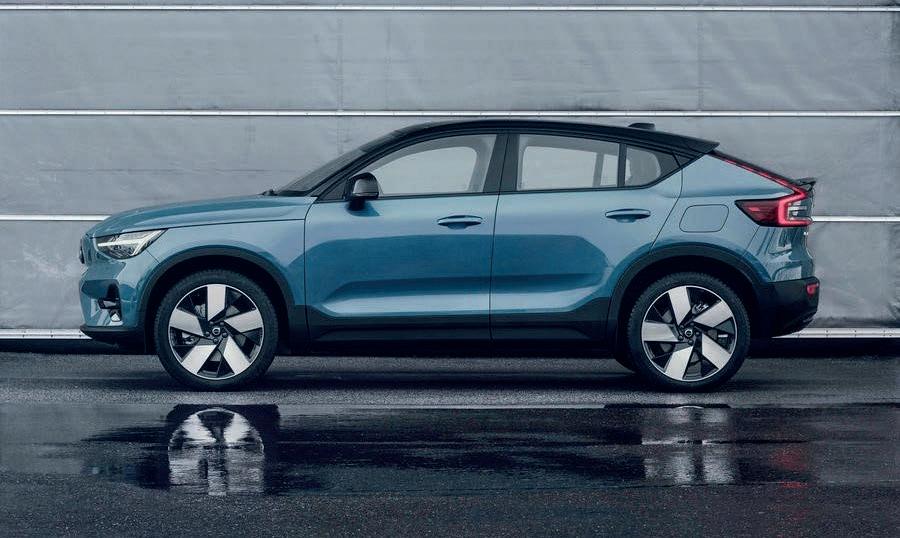
7 minute read
Business Class Motoring
Electrifying Corsa



The new Corsa-e aims to convert more of us to electric power, writes James Stinson.
You know this electric car business is getting serious when Vauxhall starts making an e-powered Corsa.
It’s significant because while electric car sales are surging, volumes are still relatively small compared to conventionally powered cars. But as car makers start churning out electric versions of their biggest selling models then more and more of us are likely to make the switch.
The electric Corsa isn’t cheap, but prices are coming down while range improves and charging rates speed up.
Thanks to the recent merger with Peugeot/ Citroen, the Corsa-e shares most of its underpinnings with the Peugeot e-208.
It’s powered by a 100kW motor and 50kWh battery which churns out a respectable 136bhp. As with all electric cars, acceleration is impressive with a 0-60mph time of less than eight seconds.
That’s all the more remarkable when you consider the batteries add another 350kg to the Corsa-e over non-electric versions.
And Vauxhall has done a good job of hiding the batteries in an H pattern under the floor. There’s still a decent-sized boot, with the absence of a full-sized spare wheel the only notable downside.
On a full charge the official range is 209 miles. That’s more than rivals like the Seat Mii but less than the Renault Zoe. Real-world range will likely be somewhat less – between 150 and 200 miles depending on driving style and type of journey.
Still, it’s more than adequate for most daily journeys and ideal for a second car. To charge up from 0-100% using a wallbox at home (Vauxhall will supply one and fit it for you as part of the asking price) takes seven and a half hours.
The car is also capable of charging at 100kW, which will take it from 0-80% in just 30 minutes, though these types of charger are rarer than hens’ teeth at the minute. You can also charge it from a domestic three-pin socket, but this takes more than 24 hours.
Inside, it’s the usual supermini fare. The cabin is fairly spacious with the front seats offering plenty of head, leg and elbow room. The rear is fine for this class and the boot is adequate.
The interior isn’t as dashing as the Peugeot’s but it’s neat, comfortable and well put together. Like the 208, it has a nice, mean, low-slung stance.
Despite the extra weight, it’s really fun to drive in and around town especially with a 0-30mph time of three and a half seconds. It feels a little more laboured on motorways where you really have to sink the pedal to push it along, which in turn reduces the range.
You can tailor how quick the car feels by choosing one of three driving modes – Sport, Normal and Eco – which improve performance at the expense of range or vice versa.
You can also tailor the braking to gather more or less energy. One setting feels just like a normal car while the other increases the car’s regenerative braking system, harvesting energy that would otherwise be wasted during deceleration to replenish the battery.
There are just two trim levels to choose from – SE Nav and Elite Nav. Standard equipment is pretty good, with SE Nav getting sat-nav, Apple CarPlay and Android Auto integration, plus rain-sensitive wipers, automatic LED headlights, high beam assist, keyless start and climate control.
Elite Nav adds larger, 17-inch wheels, heated seats, a heated steering wheel, a rear-view camera, LED front fog lights, tinted rear windows and a larger, 10-inch colour touchscreen infotainment system.
Entry level prices are roughly on a par with the Peugeot 208 though the Vauxhall has more standard equipment.
The SE Nav starts from £27,140 which is still a hefty premium over petrol-powered versions, so it remains a lifestyle choice rather than an economic one. That won’t put off early adopters and the increasing number of buyers who think the time has come to make the switch to electric.

Agnew Fleet Manager
18 Boucher Way, Belfast, BT12 6RE W: agnewleasing.com T: 028 9038 6600
ALL ABOARD THE NEW SANTA FE
Hyundai has taken the wraps off its latest Santa Fe model, with a host of new features set to push it well into the premium car category.
With strong links to its sister model, the Kia Sorrento, which we’ve already driven and loved, the Santa Fe is a keen competitor for similarly sized SUVs from Audi, BMW, Volvo and others.
The Santa Fe gets the same 1.6-litre engine as the Kia, offered as either a hybrid or plug-in hybrid, which seems small for such a big car but it’s a meaty offering. The regular hybrid has a power output of 227bhp and the plug-in 261bhp with power delivered in an ultrasmooth manner. The plug-in is claimed to be able to do 36 miles on a full charge.
It’s a big car but one with a purpose, being one of the best sevenseaters around. The cabin has acres of space and light even in the rearmost set of seats, which also fold flat into the floor to reveal a cavernous boot.
The overall look is more angular and purposeful than past Santa Fes, including some nice bodywork creases along the sides, an imposing grille and T-shaped LED daytime running lights. There are front- and four-wheel-drive options and all versions come with a six-speed automatic gearbox.
There are two trim levels to choose from – Premium and Ultimate. Prices start from £40,205 for the Premium 1.6 T-GDi Hybrid 2WD which features 17-inch alloys, privacy glass, electrically adjustable front seats, heated steering wheel, smartphone connectivity, rear parking camera, electric tailgate and a host of other goodies.
The Santa Fe Ultimate, from £43,815, adds things like a surround view monitor parking assist, a larger, 12.3 digital instrument cluster and head up display.
All versions come with plenty of safety features including Blind Spot Collision Assist (BCA), Downhill Brake Control (DBC), Driver Attention Alert (DAA) and Forward Collision Avoidance Assist with Car, Pedestrian, Cycle and Junction Turning functions. And the list goes on…

VOLVO DISHES UP A NEW COUPE-SHAPED SUV – THE C40 RECHARGE
The 1980s film Crazy People made fun of Volvos saying “they’re boxy but they’re good”. Well, Volvo is now doing the opposite with this coupe-type reworking of its boxy XC40 mini SUV. The C40 Recharge is available with electric power only and chimes with Volvo’s ambition for half its global sales to be full EVs (Electric Vehicles) by 2025 and to be an EVonly firm by 2030.
The sloping roofline certainly makes it stand out against more conventional all-electric rivals like the Audi Q4 e-tron and BMW iX3. It’s the same length and width as its sister car, the XC40, but some 6cm shorter thanks to its lower stance, while Volvo says the C40 Recharge still offers the raised seating position “most Volvo drivers prefer”. The C40 uses the same powertrain as its XC40 P8 and Polestar 2 relations, with a 201bhp electric motor mounted on each axle for combined outputs of 402bhp and 487lb ft at 4350rpm. This results in a claimed 0-62mph time of 4.9 seconds. And, as with all Volvo models now, its top speed is limited to 112mph. A 78kWh lithium-ion battery offers an estimated range of 260 miles. It can be charged at up to 11kW by an AC charger and up to 150kW by a DC charger, the latter allowing an 80% charge from empty in around 40 minutes. Volvo says that the machine’s range should improve over the car’s lifetime through planned over-the-air software updates.
As with all new electric Volvo cars, the C40 will be available exclusively online, either to buy outright or to obtain through the Care by Volvo subscription scheme. It will also be sold with a ‘care package’ that includes servicing, a warranty and roadside assistance, along with insurance and home-charging options where available.
Prices have yet to be set, but the C40 will likely command a small premium over the XC40 P8’s base cost of £53,155.


Agnew Fleet Manager
18 Boucher Way, Belfast, BT12 6RE W: agnewleasing.com T: 028 9038 6600










